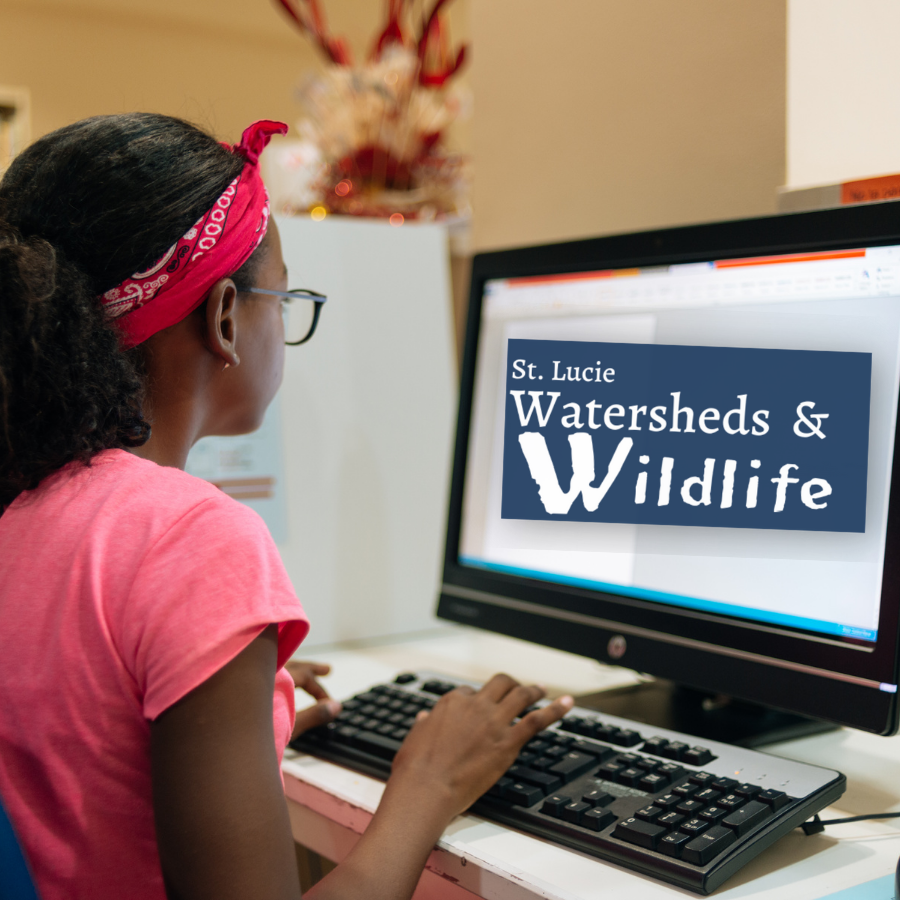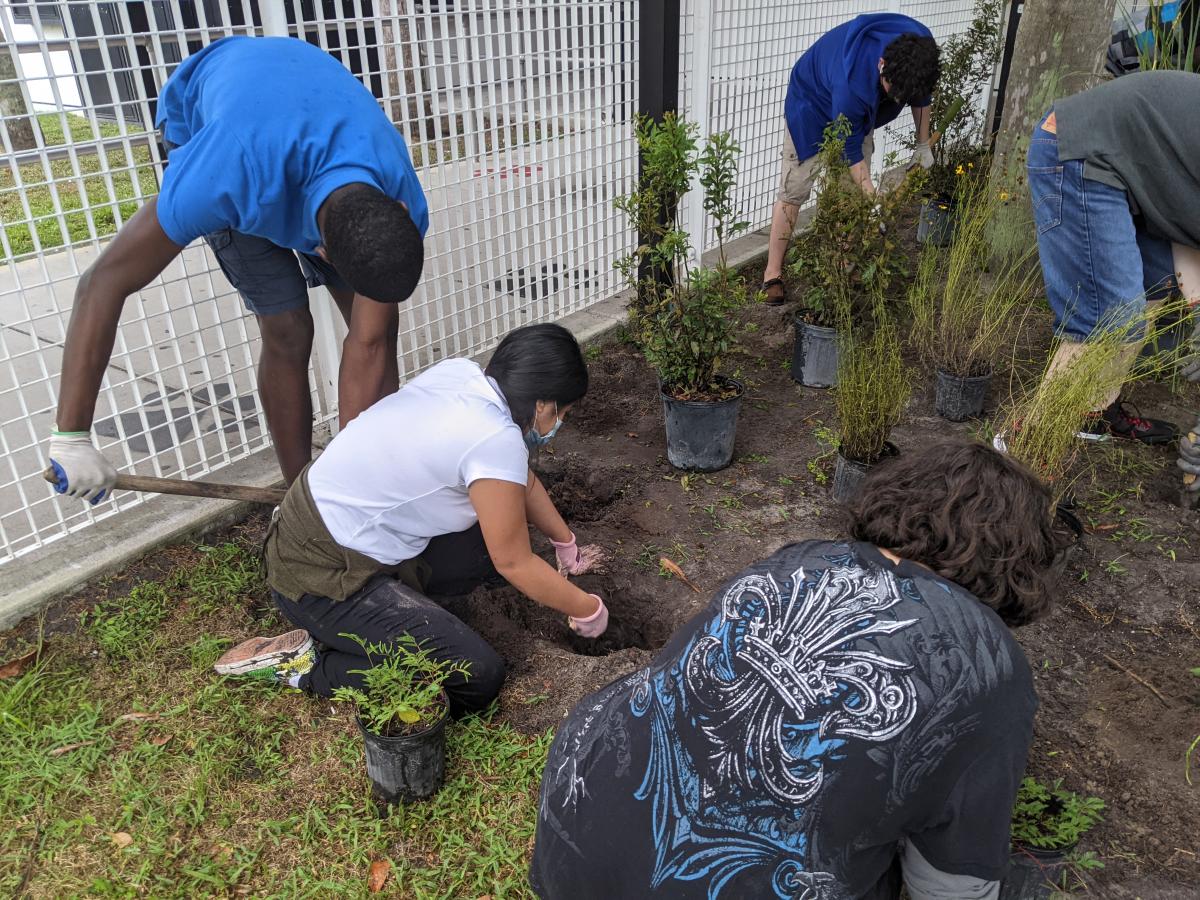Celebrating Watersheds and Wildlife: Bringing MWEE to Youth Creatively During COVID-19

eeBLUE: Watershed Chronicles
This piece was written by Kirsi Johnson from St Lucie County, Florida, Environmental Resources Department & Oxbow Eco-Center.
The NOAA Office of Education and NAAEE partnered to increase environmental and science literacy among NOAA’s partners and external networks. In this five-year partnership supported by the U.S. Department of Education, NOAA and NAAEE worked together to provide enriching after-school watershed-related STEM (science, technology, engineering, and mathematics) projects through NOAA-21st Century Community Learning Centers Watershed STEM Education Partnership grants. These grants supported programming for a total of 100 local 21st Century Community Learning Centers (21st CCLC) sites and their students. The 30 selected projects served 18 states, ranging from Alaska to Florida.
The St. Lucie Watersheds & Wildlife after-school program is providing youth at 21st Century Community Learning Centers (CCLC) two full semesters of Meaningful Watershed Environmental Experiences (MWEE) and virtual reality field trips in St. Lucie County, Florida. A resolute team was determined to spiritedly deliver the experience to students and teachers while COVID-19 is still affecting communities.
“We were honored to have been selected as a recipient of a NOAA-21st Century Community Learning Centers Watershed STEM Education Partnership grant, and from that moment on agreed that bringing MWEE to the students was more important than ever. Many nature-related learning experiences were taken away from students due to the pandemic, and we decided that we were not going to let MWEE be one of them,” says Kirsi Johnson, Program Coordinator at the Oxbow Eco-Center in Port St. Lucie, Florida.
The unique program focuses on local watershed awareness and concepts and is made possible by allocated funds from the National Oceanic and Atmospheric Administration (NOAA) and the North American Association of Environmental Education (NAAEE). The St. Lucie Watersheds & Wildlife curriculum is designed and presented by staff from the Oxbow Eco-Center, a division of the St. Lucie County Environmental Resources Department.

During the first semester, students virtually join a guide to experience 10 progressive lessons featuring the St. Lucie River watershed and local wildlife. Each lesson is enhanced with video clips and interactive elements that highlight special topics such as aquatic animal adaptations, plastic pollution, and sea-level rise. In the second semester, the guide leads student teams for another 10 weeks in designing and implementing watershed stewardship projects at their school site. During this experience, students also virtually meet with local scientists and subject-area experts to ensure they are on track to design projects that are successful and reduce human impacts on the watershed. Projects to date include pollinator and rain gardens with native plant species, and video and print public awareness campaigns.
“It’s actually great to know that I can do something to help the animals and our environment,” says a student stewardship participant, “I’m going to try to plant some native plants at home to help wildlife!”

Perhaps the most unique element of the St. Lucie Watersheds & Wildlife program will take place during the summer of 2021, when each student will embark on a virtual reality field experience—with VR goggles—‘traveling’ to sites on the St. Lucie River, Indian River Lagoon, and Atlantic coast. Students will conduct a site-specific virtual lab at each location and use the Nearpod platform to collaboratively analyze data in a ‘virtual laboratory’.
“The introduction of the VR goggles to the experience is going to be the next best thing to being at each site in person,” says Natalie Frendberg, Education Coordinator at the Oxbow Eco-Center, “it has been a challenge to learn the new technology quickly and bring it to the students, but we anticipate the experience to be impactful as well as memorable.”

The St. Lucie Watersheds & Wildlife program engaged over 500 students in the 2020-2021 school year, and program development is underway for the next year. Oxbow Eco-Center staff plan to go “live” into classrooms beginning this summer. “The Watersheds & Wildlife program encourages students to be more caring about their environment and help them gain a greater knowledge of the main purpose of the watershed,” noted a participating teacher when asked about students' engagement in the program. “And that is one way we know our perseverance paid off,” says Johnson.








Comments
What a wonderful combination of virtual and hands-on learning opportunities. I love that the kids also got to talk with experts in the field!